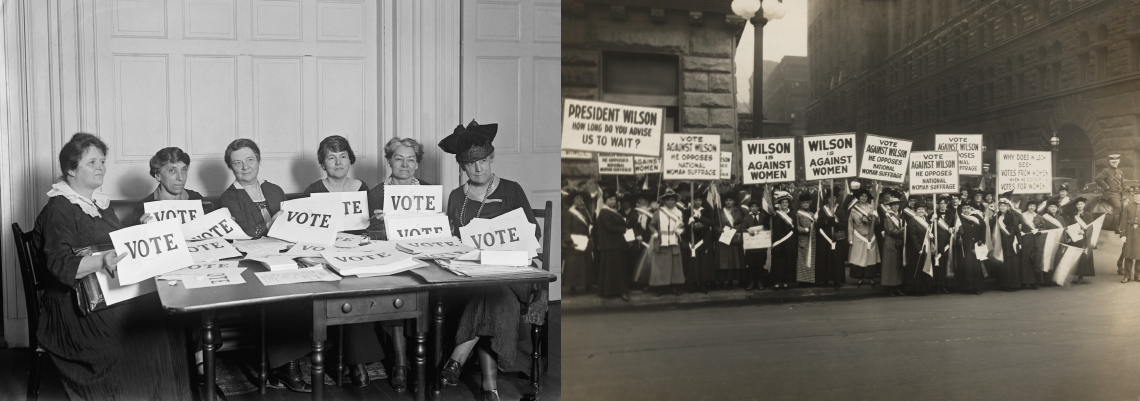

1919 marks the 100th anniversary of the passage by Congress of the 19th amendment granting women the right to vote. On June 4, 1919 the 39-word amendment was sent to the states for ratification.
The right of citizens of the United States to vote shall not be denied or abridged by the United States or by any State on account of sex. Congress shall have power to enforce this article by appropriate legislation. — The 19th Amendment of the Constitution of the United States
On August 18, 1920 Tennessee became the 36th state to ratify the amendment, achieving the required two-thirds majority of states ratifying the document to make it official. Eight days later, the 19th Amendment took effect.
When people think about the American suffrage movement, names like Susan B. Anthony and Elizabeth Cady Stanton quickly come to mind. They were indeed critical leaders in the movement, but there were many women and yes, men too involved in the fight for women’s rights including suffrage. The video vignettes on this page briefly introduce some of those other figures including Emily Howland, Matilda Joslyn Gage, and Frederick Douglass, said to be the only person of color to sign the Seneca Falls Convention’s Declaration of Sentiments. One of the vignettes focuses on the Quaker Meetinghouse in Farmington, New York, a place where social reform movements including suffrage, abolition, and rights for Native peoples came together.
But as the 1920 anniversary date looms, scholars are digging deeper into America’s suffrage history to more fully convey the breadth of the American suffrage movement and the diversity of those involved in it. We are learning more about Haudenosaunee women and their leadership roles in their Native American culture that inspired women’s rights advocates like Matilda Joslyn Gage. Historians are examining the lesser told suffrage activism of African American women whose work was often done in the face of racism.
Sojourner Truth is considered the first known African American suffragist. Born in Brockport, Fannie (Frances) Barrier Williams was a leader in the African American women’s club movement in Illinois and lectured on the need for Black women to vote. She was the only African American chosen to eulogize Susan B. Anthony at the 1907 National American Woman Suffrage Convention. Mary Talbert was a Buffalo educator, suffrage supporter, and vice president of the National Association of Colored Women. She spoke and wrote frequently about the need for suffrage and also was a pioneer in the historic preservation movement, helping to save the Washington, D.C. home of Frederick Douglass. Rochester’s Hester Jeffrey, a friend of Susan B. Anthony, organized the Susan B. Anthony Club for Colored Women and served as its first president. The club advocated for women’s suffrage.
Some women were not only marginalized or even excluded from the women’s suffrage movement, they suffered a similar fate when trying to vote even after the passage of the 19th Amendment. The National Park Service’s “The 19th Amendment: A Crash Course” states, “While many women were able to head to the polls, the 19th amendment did not give voting rights to all women. Women of color, immigrants, and lower income women were often deterred from voting by laws and social pressure. Native American women, not considered U.S. citizens, were not permitted to vote until 1924.”
Continuing scholarship is “naming names” while also conveying that the struggle for women’s suffrage was even more complex than it has been portrayed.
Floating Ideas: How the Erie Canal Helped Shape America
Examines the spread of ideas along the Erie Canal, with an emphasis on women’s rights, suffrage, and the quest for social justice. The film threads together movements to end slavery and secure women’s right to vote. Themes include: the influence of the Haudenosaunee on suffragists like Elizabeth Cady Stanton and Matilda Joslyn Gage; the women left out of the suffrage narrative who faced voting barriers despite the passage of the 19th Amendment; and expanding opportunities for women today. The documentary was produced by WCNY for the Erie Canalway National Heritage Corridor with funding support from the National Park Foundation, the National Park Service, and the New York State Canal Corporation.